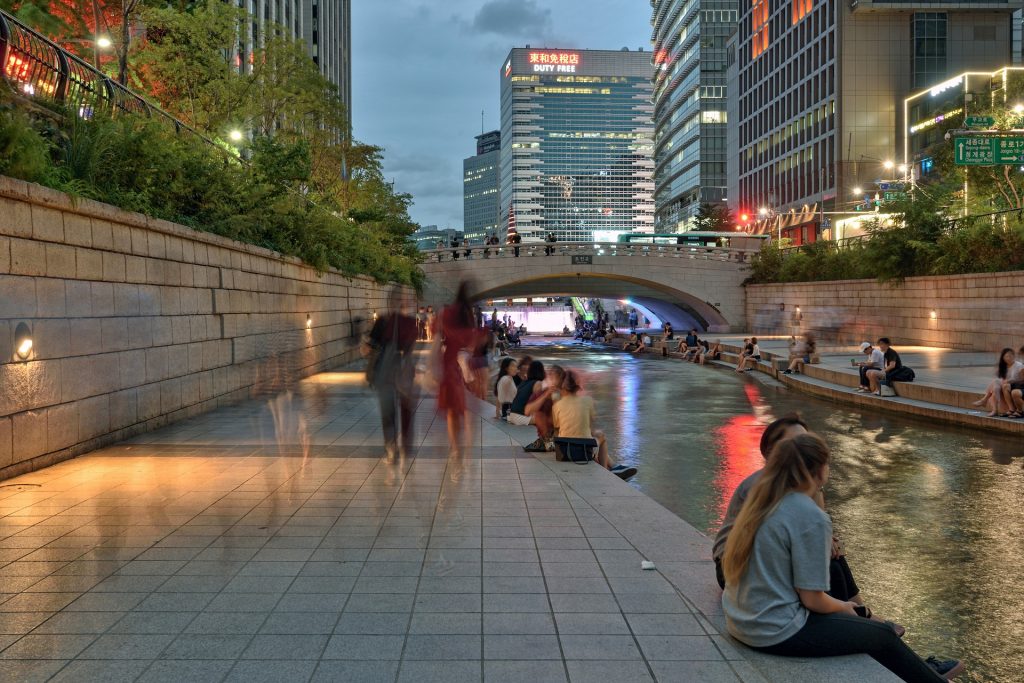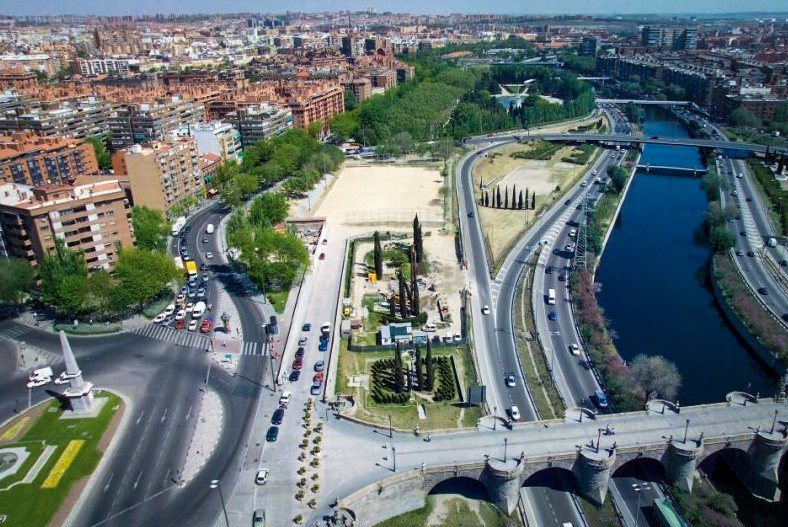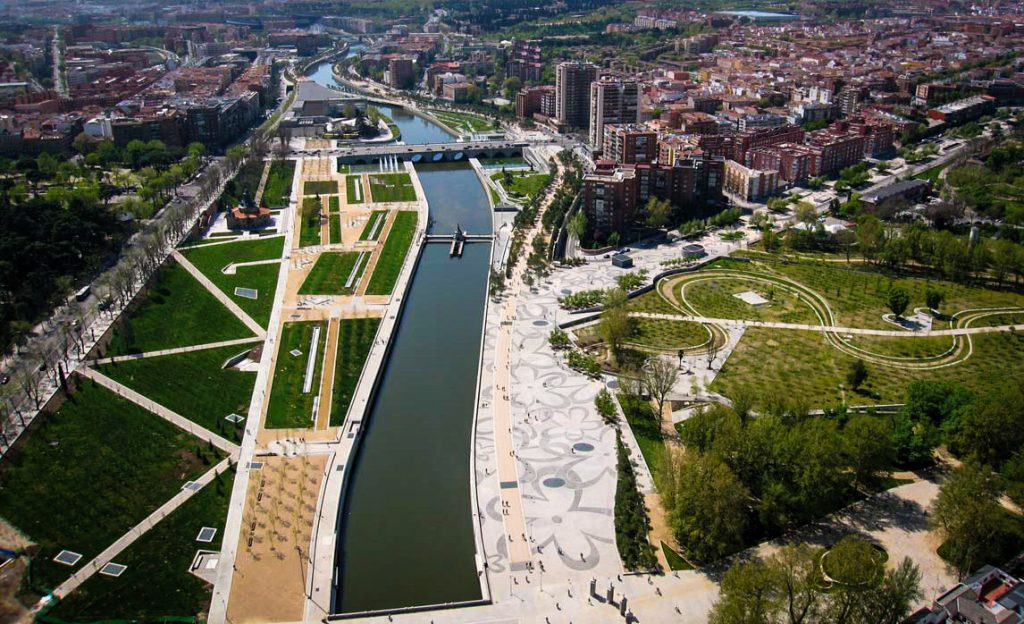Our cities have been constructed almost entirely around private cars. But what’s happening now? Cities are realising that infrastructure for motor vehicles in urban areas often leaves them looking grey, industrial and not very liveable places for people. Keep reading to find out how highways are now being transformed and what our top 5 picks from around the world are.
1. Madrid’s Urban Beach Paradise Reconstruction
In 2008 the Department of Urban Planning officially launched the Río project in Madrid. Río aimed to reclaim the city’s main Manzanares river and restore the surrounding natural environment for the enjoyment of local residents and tourists.
The aim of the project was to create a more cohesive and fluid relationship between the built-up city landscape and the countryside surrounding it to make it more habitable and sustainable environment for city inhabitants.
After almost 8 years under construction, it was finally opened to the public in 2015.
The relocation of a large section of the city’s inner ring-road underground meant that the banks of the river were able to be converted into parks, bicycle paths, kiosks, cafes and sports grounds and to top it all off, even an urban beach!
2. London’s Exhibition Road ‘Shared Surface’
The street you’re looking at is called Exhibition Road and was previously one of the busiest streets for traffic in the cultural district of London.
Since the 1960s, the road was divided into 2 lanes of traffic with three subsequent rows of parked vehicles. But this area being the home of many major cultural landmarks and museums, a road constantly blocked with cars and traffic felt somewhat inharmonious with the surrounding area.
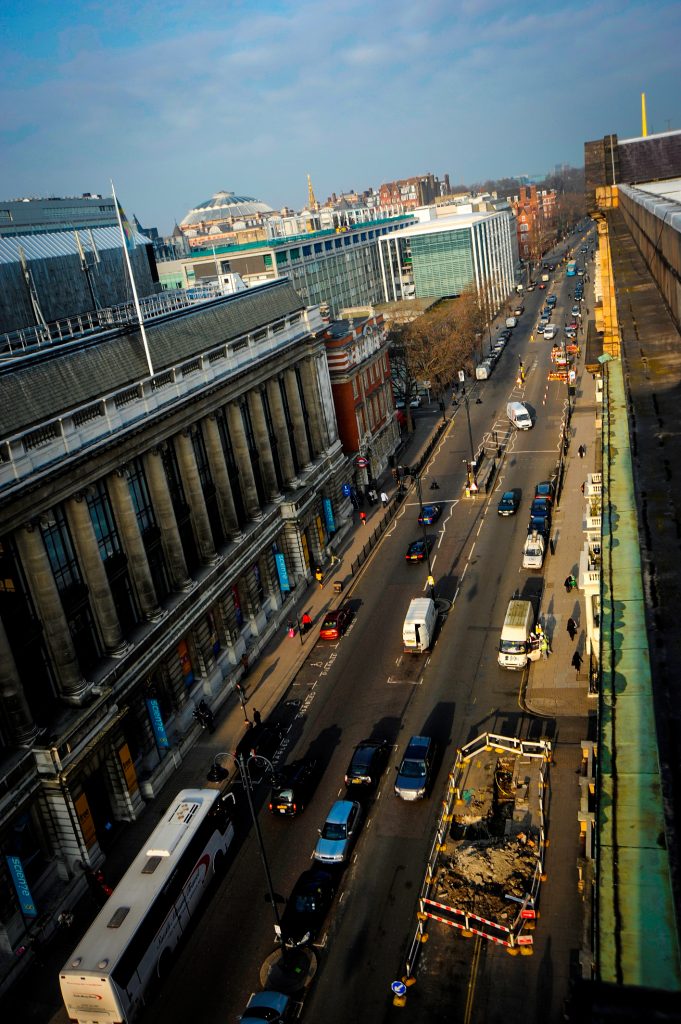
Image credit: ©Royal Borough of Kensington and Chelsea 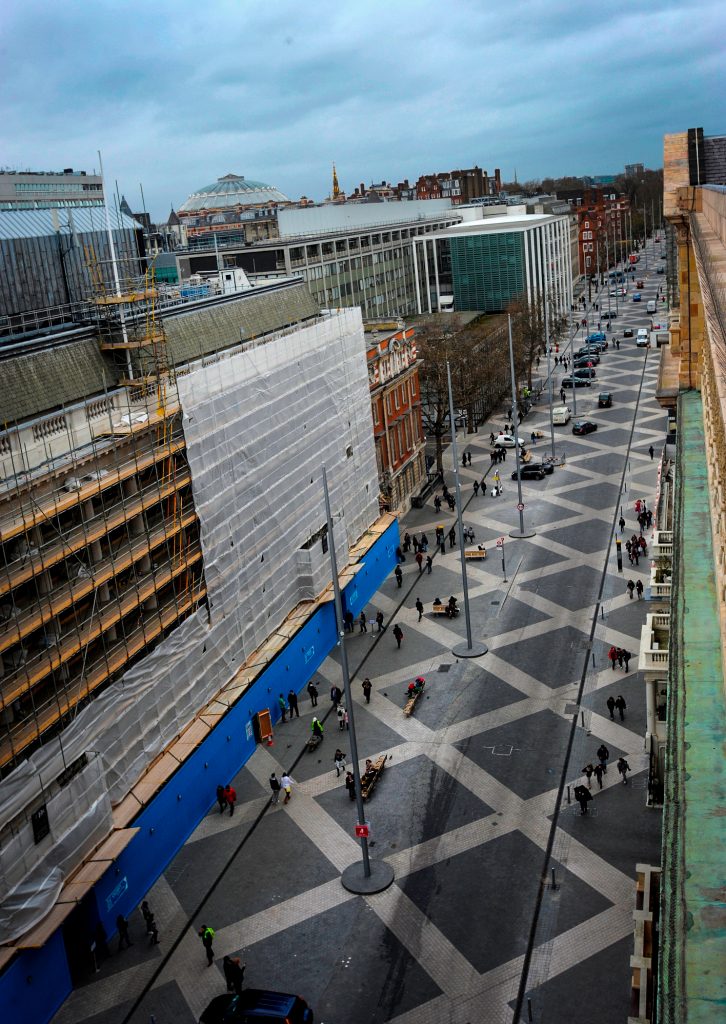
Image credit: ©Royal Borough of Kensington and Chelsea
Therefore, the Royal Borough of Kensington and Chelsea initiated a competition to come up with ideas as to how the road could be repurposed for better pedestrian use.
The aim of the project was to make the areas surrounding cultural attractions more peaceful and relaxed, so people could leisurely stroll through the area and enjoy the art and scenery.
The ‘shared surface’ idea which prevailed, meant that the entire road was completely paved over and turned into an entirely pedestrianised urban area whereby people could move without obstacles across the open space.
The removal of traffic lights and road signs “creates a level of ambiguity that slows cars down and increases the interaction between different modes of travel.”
3. Seoul Korea: Cheonggyecheon Motorway Renovation
In 2005, the Seoul Metropolitan Government decided to dismantle the 10-lane roadway and 4-lane highway which carried over 170,000 motor vehicles every day along the Cheonggyecheon stream.
What replaced this urban freeway was the creation of a blissful biophilic landscape and pedestrian-only public space where greenery and social connection became the focal point of a dense metropolitan area.
The project contributed to a 15.1% increase in bus ridership and a 3.3% increase in subway ridership between 2003 and 2008, with the renovated area now attracting 64,000 visitors daily.
While previously there were around 170,000 cars travelling along the highway daily, now there are only around 30,000 – in fact, there is so little traffic on the road on Sundays that the road is able to be closed off and used for other purposes.

Image credit: Globaldesigningcities 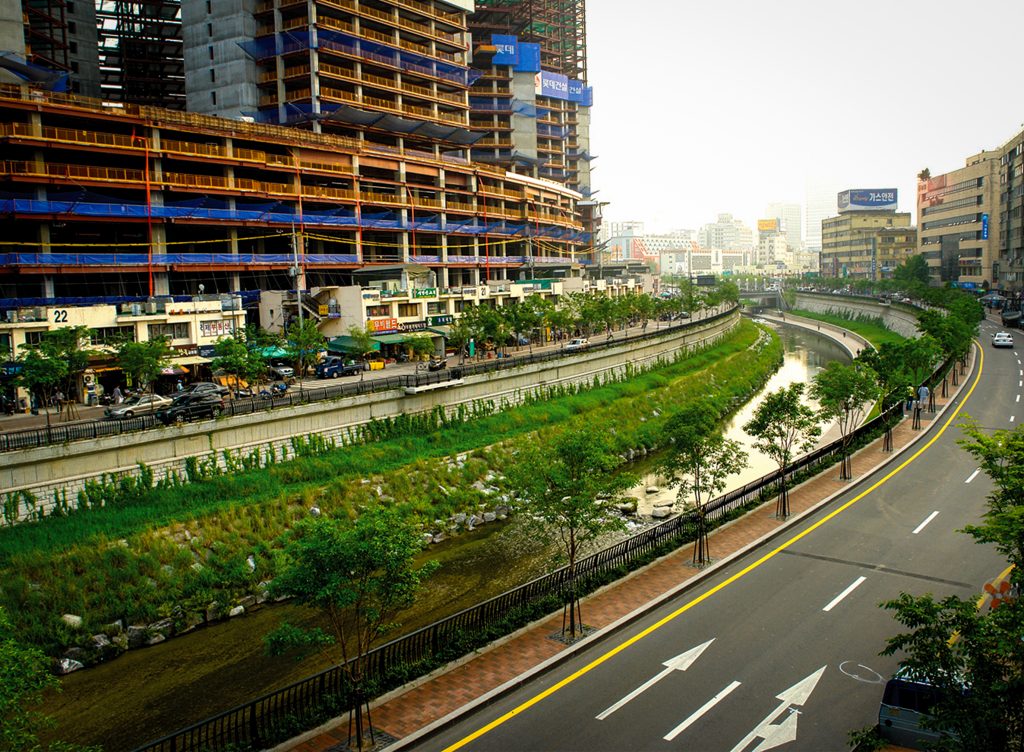
Image credit: Globaldesigningcities
4. Times Square: Pedestrian Plaza
The reconstruction of Times Square’s 2.5 acres of now pedestrian-only space began in 2010 and was recently completed in 2017.
This completely transformed a once congested intersection into a world renowned open public space. The removal of cars from such a central spot in the city means that a once heavily congested space has been revitalised in favour of more comfortable and free movement of people, reviving life in the heart of the Big Apple.
On average, 330,000 people go through Times Square daily – therefore creating a space solely for the movement of these people has been an integral and inspirational reshaping of city space towards the future of car-free urban infrastructure.
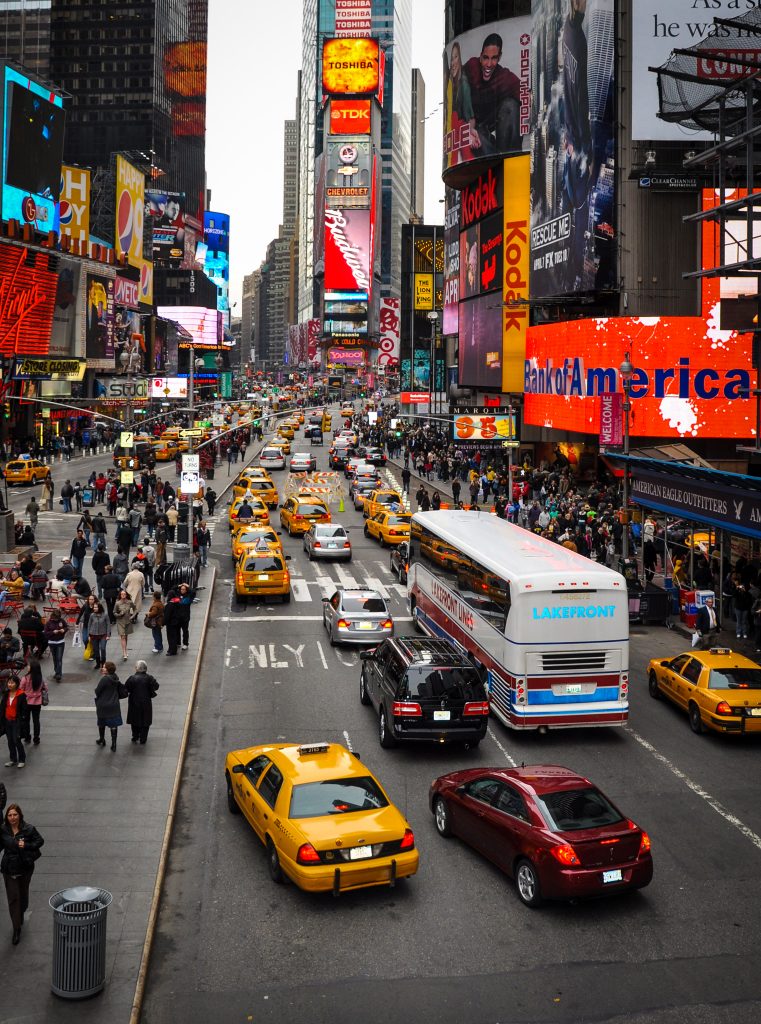
Image credit: New York City Department of Transport 
Image credit: New York City Department of Transport
5. San Francisco: Freeway Deconstruction
The Embarcadero freeway was previously the main artery of the San Francisco city landscape – however, in 1989 an earthquake struck the bay area, severely damaging its infrastructure.
Instead of replacing the highway which would have been a significantly costly and time-consuming endeavour, the general public consensus was that the highway should be removed when residents saw the potential for how the space could be used better.
In its place, the ROMA Design Group created plans for a Boulevard in 2002 which provided more space for alternative transportation such as walking and cycling – helping to shift the focus away from personal car use.
The area has since sprung to life with more than 100 acres of land along the waterfront that is now transformed into a public promenade, and in the years that followed real estate and commercial value in the surrounding areas increased by 300 percent.
Looking at these pictures side by side, it’s difficult to imagine that a highway ever existed. Yet, it illustrates perfectly the extent to which urban landscapes can change for the better when cars are no longer the main focus, and hopefully we will start to see more cities following in these footsteps in future.
These major reconstructions show that large scale urban transformations really can happen and what’s possible for the future. As we begin to tackle the dominance of private vehicles head on, we start to realise the value of public space – and how when you re-design for people, you revive city life for everyone.
Do you know of any other exciting highway reconstructions going on right now? Let us know below!

